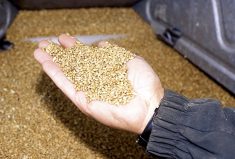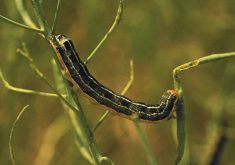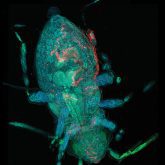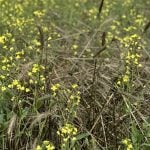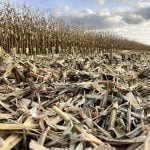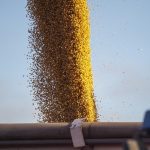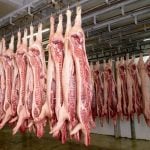Last month’s cold weather snap could pay some dividends for crop producers.
“It could be good news. The bad news is that we got snow at the beginning of it, so snow tends to insulate,” said Scott Meers, insect pest management specialist with Alberta Agriculture and Forestry.
The deep freeze gripped the entire province, with -40 C being a common reading and records being set in southern Alberta (for example, Lethbridge saw a low of -38.5 C). That kind of cold can kill overwintering pests, but the jury is still out on whether the extreme cold will pay dividends in the growing season.
Read Also

The long march to autonomy
The big players in the machinery market keep adding pieces towards autonomous vehicles for farming, but how far away is a final product?
Research out of Manitoba shows that bertha army worm populations can be reduced by cold soil and cold temperatures. Alfalfa weevils have a certain threshold if the crown of the alfalfa plant gets cold enough. Others may or may not be affected. Wheat stem sawfly and wheat midge are probably not affected by cold temperatures.
“It’s very pest specific,” said Meers.
But cold temperatures won’t make a difference in terms of disease, said Sheau-Fang Hwang, research scientist in plant pathology with Alberta Agriculture.
Again snow cover provides a good insulation, and so the deep cold won’t have an impact on disease loads.
Alberta Agriculture has posted its first wheat stem sawfly and wheat midge forecast maps, as well as putting up a pea leaf weevil forecast map early because many producers start treating seed for that pest at this time of year. (The maps can be found at www.agriculture.alberta.ca by searching ‘insect forecast.’)
Pea leaf weevil levels have increased in central Alberta and expanded their range. Last year was a lower year for pea leaf weevil on a whole, but that fluctuates from year to year.
“We don’t particularly forecast the trend, but we have been watching in central Alberta. That will probably continue into 2018,” said Meers, who is based in Brooks.
Wheat stem sawfly is expected to be on the increase this year, in the Willow Creek and Vulcan area. In the traditional areas, there will be a little bit of an increase. Wheat midge levels are expected to be similar to 2017, with the area east of Edmonton most at risk.
“That’s kind of the same, but maybe a little less intense in 2018,” said Meers.
He said he can’t make predictions on what cabbage seed pod weevils or diamondback moth populations will look like come spring. Grasshoppers are also difficult to predict, but have been increasing moderately in southern Alberta.
“We had a fairly big year in northern and central Alberta and up into the Peace with grasshoppers,” said Meers.
“We’ve been seeing an alternate-year cycle there and we’re uncertain whether that will continue. If that continues, then grasshoppers will be low next year in northern Alberta and the Peace. If it goes the traditional way, then grasshoppers will be high in 2018. It could go either way.”
There’s just been a really strong pattern of alternate-year outbreaks for grasshoppers, he added.





